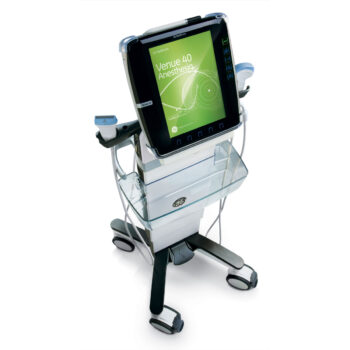The Philips S4-2 Ultrasound Probe: Advancing Imaging Capabilities in Healthcare
The Philips S4-2 ultrasound probe is a cutting-edge medical device that has been designed to revolutionize the field of diagnostic imaging within the healthcare industry. Employing state-of-the-art technology and innovative engineering, this probe offers a range of features and capabilities that contribute to improved patient care, accurate diagnoses, and enhanced user experience for healthcare professionals.
Key Features and Specifications:
The Philips S4-2 ultrasound probe is a compact and lightweight device that is compatible with a variety of Philips ultrasound systems. It is specifically designed for cardiovascular applications, allowing medical practitioners to obtain detailed images of the heart and surrounding structures. The probe operates at frequencies between 2 and 4 MHz, enabling it to capture high-resolution images of cardiac anatomy and blood flow dynamics.
One of the standout features of the Philips S4-2 probe is its advanced transducer technology, which incorporates elements such as single crystal technology and PureWave crystal composition. This technology optimizes image quality by enhancing penetration, resolution, and overall clarity. The result is a clear visualization of cardiac structures, valves, and blood flow patterns, which is essential for accurate diagnosis and treatment planning.
Additionally, the Philips S4-2 probe offers a wide field of view and real-time imaging capabilities, allowing healthcare professionals to capture dynamic images of the heart in motion. This is particularly valuable for assessing cardiac function, identifying abnormalities, and monitoring changes over time. The probe’s ergonomic design and user-friendly interface further contribute to its usability, ensuring that clinicians can perform exams with ease and efficiency.
Clinical Applications and Benefits:
The Philips S4-2 ultrasound probe is a versatile tool that finds application in various clinical scenarios within the field of cardiology. It is used for transthoracic echocardiography (TTE), a non-invasive imaging technique that provides valuable insights into the structure and function of the heart. TTE examinations with the S4-2 probe aid in the diagnosis of conditions such as heart valve disorders, cardiomyopathies, congenital heart defects, and pericardial diseases.
By delivering high-quality images and comprehensive diagnostic information, the Philips S4-2 probe empowers healthcare professionals to make informed decisions about patient care and treatment options. Its ability to visualize intricate cardiac structures and assess blood flow dynamics contributes to accurate diagnoses, early detection of abnormalities, and effective management of cardiovascular conditions.
Conclusion:
The Philips S4-2 ultrasound probe stands as a testament to the continuous advancements in medical imaging technology. With its cutting-edge features, exceptional image quality, and broad range of clinical applications, the probe plays a pivotal role in elevating the standard of care in cardiology. By equipping healthcare providers with the tools they need to conduct thorough assessments and make informed decisions, the Philips S4-2 probe contributes to improved patient outcomes and enhanced overall quality of care in the realm of cardiovascular medicine.
Features
Technology: Broadband
Number of elements: 80
Frequency range: 4-2 MHz
Specifications
| Technology | Broadband |
| Number of elements | 80 |
| Frequency range | 4 – 2 MHz |
| Array Type | Sector |
| Aperture | 20.3 mm |
| Field of view | 90° |
| Volume of field of view | – |
| Modes | 2D, CW, steerable pulsed wave, High-PRF, color Doppler, tissue Doppler, XRES, AutoSCAN, iSCAN, and harmonic imaging |
| Applications | Adult echo, abdominal, pediatric echo, and TCD applications |
| Biopsy capable | Yes |
| Image Fusion Navigation capable | No |
| Physical dimensions | – |











Reviews
There are no reviews yet.